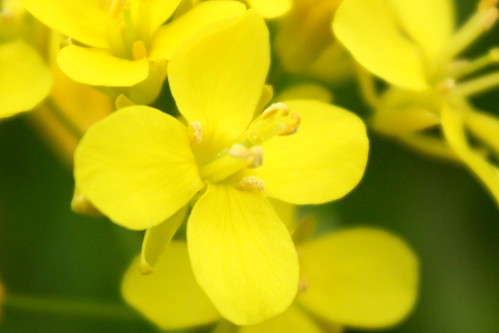This field was photographed on the last day of school, Thursday, June 11, during Field Day games. We were surrounded by the Green Mountains and the mountains of Canada (which is what you see here) and by these fields of white mustard. I have also seen it called yellow mustard, and I have seen the scientific name spelled Brassica herta. The fields were so regular that it seems that they were cultivated.
 According to the Nature Conservancy's invasive.org, this plant is not invasive in either Vermont or New Hampshire.
According to the Nature Conservancy's invasive.org, this plant is not invasive in either Vermont or New Hampshire.White mustardhas medicinal qualities. From herbalremedies.com:
Mustard seeds stimulate circulation. A white or yellow Mustard seed plaster can be used to eliminate chest congestion. It warms the skin and opens the lungs to open the airways. Powdered black Mustard seed is used to relieve arthritis, rheumatism, toothache, and other types of soreness or stiffness. Black Mustard seeds also make a soothing footbath and can eliminate colds and headache. The Chinese use Brown Mustard to treat colds, stomach problems, abscesses, rheumatism, lumbago, and ulcers. They use the leaves to treat bladder inflammation. Taken in small doses, Mustard is a wonderful appetite stimulant that also helps with digestion. Taking larger doses though can cause vomiting. Due to the oil and fat content in Mustard seed, it works well to use as a laxative. Oil from the hulls of seeds promotes the growth of hair. Mustard seed oil is also used in massage therapy._/\_/\_


 Brassica Hirta
Brassica Hirta
A beautiful view of the Mustard field and great imfo on the health benifits. I remember my mother tellng me about this treatment.
ReplyDeleteTom :O)
My blogs today show Meadow Views and Butterfly's